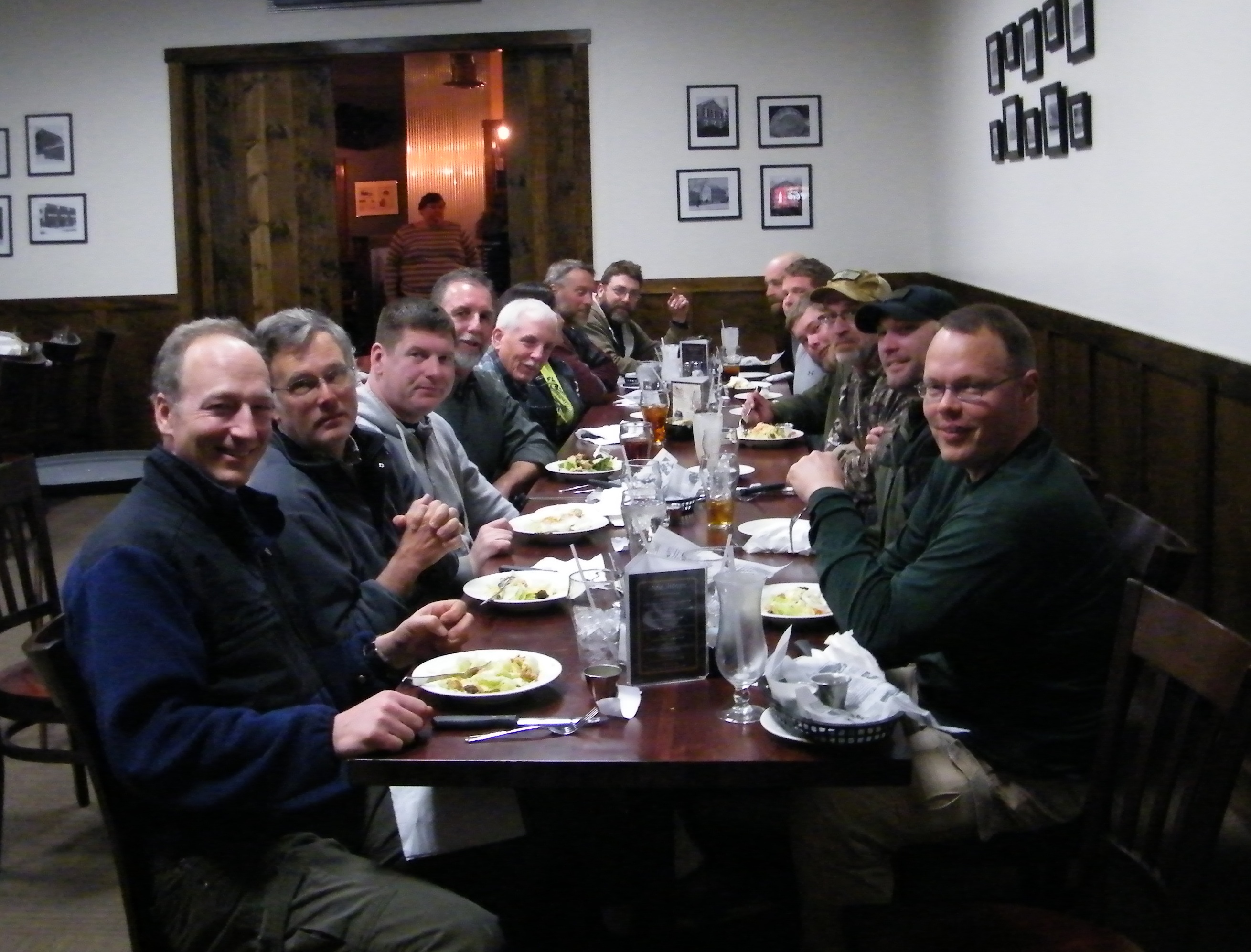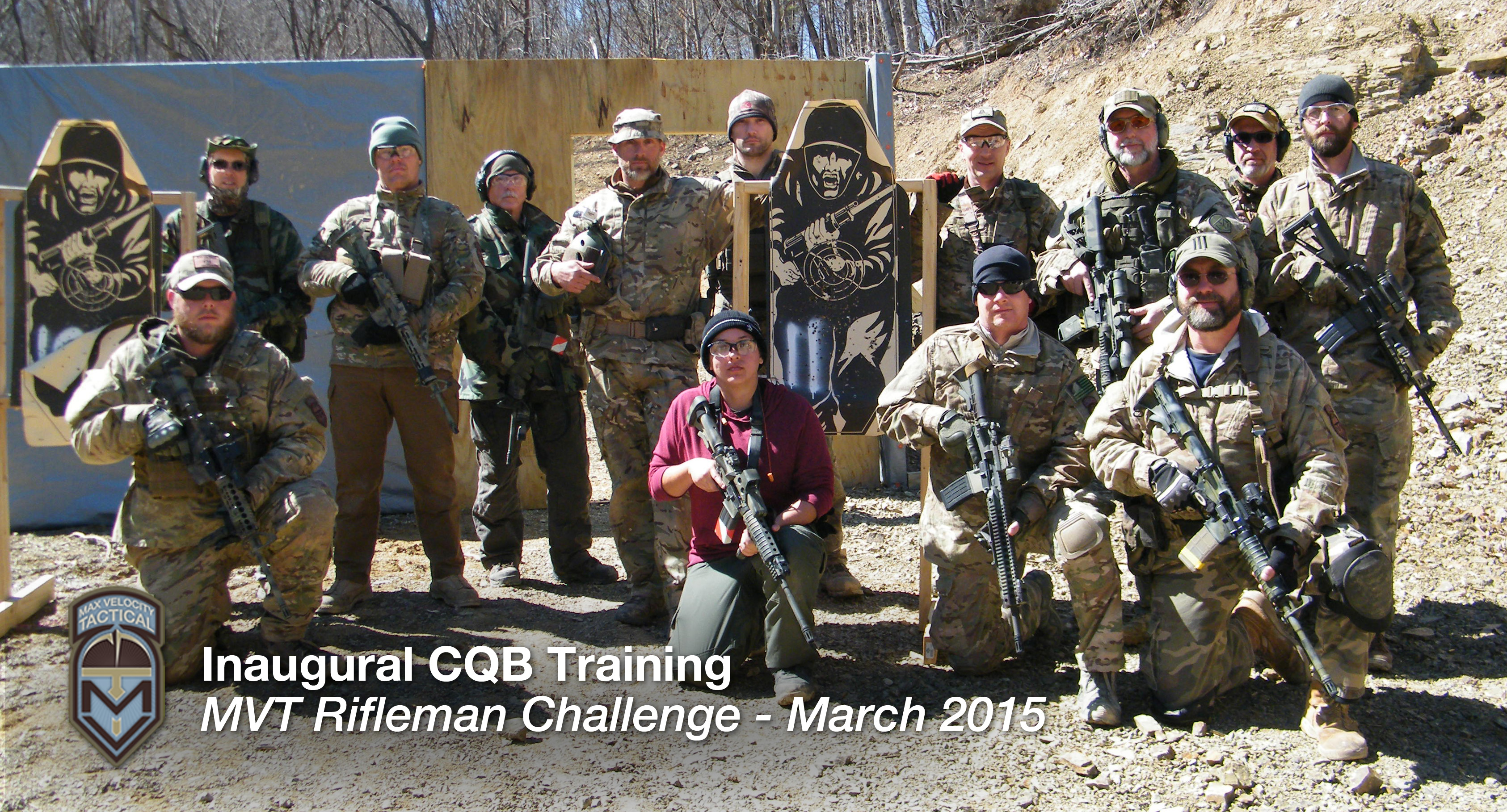Student Review: MVT Rifleman Challenge: Duane
To my fellow Riflemen Challenge compatriots: Let me say that it was great all y’all even if I wasn’t the most talkative.
I started my training in 2001 when I bought my first rifle(s) and I went to an NRA Highpower match to pick up a few tips. Seven years later I decided that I needed some real training. I attended an Appleseed Clinic and after working at it for a few months and a clinics I got my Rifleman patch. I continued with the program and I have qualified at full distance (400 yds) with everything from an M1 Garand to an M4. In 2009 I attended my first “Tacticool” class and I took several rifle and pistol courses. By 2012 I realized that individual (square range) skills were great, but I had maxed out my individual gun handling skills. As a prepper, I knew the next logical step would be squad and platoon level (team) tactics. I signed up for a 5 day team class at a tacticool school. By the end of the class, I had learned some things but I felt that some of the stuff they were doing did not make any sense.
I found John Mosby’s site in 2013 and when he announce he was coming to WV, I signed up. While I did OK in the class, I came away with some realizations. 1. More PT. 2. Moving and communicating is a lot harder than just shooting. I came across Max’s site a month or so later and I immediately signed up for CRCD in 2013. At MVT I have taken CRCDx2 and Combat Patrol.
One thing that frustrates me in the prepper/III’er/gun nut/patriot community: The lack of standards. More descriptively: People believe that if you have a gun and some ammo then you are ready. Some even believe that if you have been to a tacticool school then you are an “operator”. As a student of history, I knew that was BS. Even in a self-defense situation, PT and good TEAM tactics is what makes the difference. So when Max announced a set of standards, I was excited. It is still my hope that this concept will catch on in the prepper/III’er/gun nut/patriot community and that there will be MVT “Franchised” Riflemen in other places. The potential for networking will then be endless.
So, a little about me: I am a 41 year old BFF (Big Fat Fellow) husband and father of three. I have been a registered nurse since 1994. I commissioned into the Army Reserves in 2011 for God and Country and currently finishing up my first active duty mobilization. I am not a natural athlete. In high school I was on the chess team and weighed 280 pounds. In 2007 I was at 310 pounds and began exercising and dieting and lost 60 pounds. I began running and have been running ever since.
Everyone thinks that if you are in the military, that you are automatically tactically sound and physically fit. Not so. The physical standards are actually quite low in the Army Medical Department and there is little opportunity for high speed training, especially in the reserves. That being said, I still didn’t have to start from zero when I began training for the Rifleman Challenge.
My training plan was conservative to say the least. I did not want to reactivate a long list of “sports injuries” that I have. I started off by rucking with a 30 pound ruck 2-3 miles for a month. On the second month, I began TAB’ing once a week. Starting with a 20 pound ruck and advancing to 35 pounds. By December, I was TAB’ing 2 miles in 25 minutes. The section of road I TAB’ed on was sufficiently hilly to make it a challenge. In the month prior to the RC I had gotten it down to 22:30.
Above: Qualified Rifleman. Duane: right side.
DAY 1 of the RC:
As stated in the course outline the first thing you do is the PT test. The course is one mile downhill and one mile back up the hill. It was wet, a little muddy and rocky. The terrain definitely takes away time from your run. I held myself back a little on the downhill so I could have some left on the uphill to run. That didn’t last long. As the uphill is about 85% percent uphill, there was no opportunity to catch my breath on flat ground so I ended up speed walking most of the uphill. I put forth maximum effort to the point I was gasping and I had tunnel vision. When I got to the finish point, I thought like 6-7 people had passed me and gotten there before me. Turns out I was #3 with a time of 24:40.
Hindsight being 20/20 I would have trained harder and put forth maximum effort on the downhill. With the terrain being what it is and the hills I will be shooting for a 20 min TAB by my house. I drank my recovery (chocolate milk, gatorade and 2 bottles of water) and prepped for the rifle qual.
When Max first posted the standards for marksmanship, there were a lot of people who thought it wasn’t stringent enough. After the PT test, it was plenty tough. (I am saying this as an Appleseed Instructor and Full Distance qualified). See the course description for the COF. I passed the first time though with a score of 55.
We then attended a condensed lecture on TC3 and then broke into teams of 3 and practiced it some.
Sufficiently tired we ended the day and met at the Main Street Grill.
DAY 2:
Day 2 began with Land Nav. I have had land nav twice before and performed adequetely (AS in I have never been permanently lost). I refreshed my memory the night before and Max gave a brief orientation to it in the AM. Then we set out to find our points. I have known all along that land nav is not my thing. While I grasp the concepts, in the application I still have problems. I should not have had problems as this course was not too advanced and there was only about .5 K distance between points. Needless to say by the time 3 hours was approaching, I had only found 3 out of 4 points. I did come back in the 3 hour time limit so I got 3 points plus 1 for coming back in time which would have dq’ed me from Vanguard had I made the PT test in under 23 mins but still kept me in running for Rifleman.
Let me say that the Land Nav was physically a gut check for me. I never once considered quitting on the PT test, but by the time 2 hours of up and down those hills had gotten there and I had only found 2 points the thought entered my mind. I sucked it up and drove on despite the cramps in my legs and the pain elsewhere. When I got back to the rally point, I didn’t know if I would physically be able to carry on but I went to my car drank, ate and napped and I was able to soldier on.
We did weapons clearance and malfunctions and then we moved on to the lanes. The first lane was react to contact and assault forward. It was more aggressive than anything I did in CRCD or CP. Then we did a RTC break contact.
Sufficiently tired we ended the day and met at the Main Street Grill.
It began with a simulated casualty evacuation. We had a stretcher three 20L USGI water cans and we as a team effort evacuated the casualty from the sqaure range to the pavilion. We had to switch out in 4 man teams and the standard was we didn’t quit, didn’t stop and didn’t drop the litter. I have to say, that this was the smoothest I have ever seen one of things go.
Then we began the CQB instruction. This was an extremely informative block of instruction and well worth it. When I first learned CQB and room entry, it was the “stack 10 guys on the door and flood the room.” I thought that was kind of stupid as it meant that any resistance had a lot of targets to shoot at. The way taught at MVT makes perfect sense with the priority being “stay alive.”

Then we had an AAR, awards and left.
TAKEAWAYS:
1. PT. Depending on what your local terrain is, plan on training to a higher standard than what you are trying to achieve. I was shooting for Vanguard and I was satisfied with a 22:30 2 miles on the road near my house.
2. Food and hydration. Do a lot of it. Calorie expenditure on something like this is high and don’t be afraid to eat a lot more and more frequently than you normally do. Hydrate before, during and after.
3. Gear. Go with the lightest gear you need for this event. I ran my 4.5lb AR and a small chest rig. My plan was to switch to my AK and larger rig on day two because the bullets are cheaper. After the land nav in which I carried my AK and AK rig, I said F*&% it and went back to my lightweight gear.
4. Don’t let your ego get in the way of doing one of these. I honestly believed I stood a good chance to make Vanguard and maybe even coming in 1st or 2nd. While I am disappointed that I didn’t make Vanguard I still learned alot. For the people that are so afraid of failing in front of other people, you will never self improve unless you challenge yourself.
IN CONCLUSION:
I don’t know where I will be or what I will be doing this September when the next RC is offered. I hope that I will be in a position to do it again or at least volunteer as a Marshall. The people who showed up, competed, and learned are all winners in this even if they didn’t make Rifleman. MVT is doing a good thing and I hope it catches and takes off.
Duane H.
Rifleman, Max Velocity Tactical.





